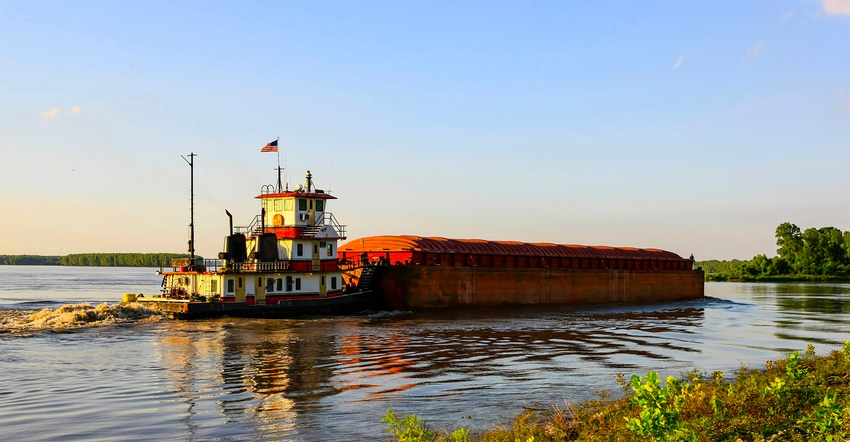
By Bre Bradham and Isis Almeida
Vessels and tugs pushing more than 700 barges remained stalled Thursday on the Mississippi River near Memphis, slowing the flow of everything from grains to metals to fuel on the key U.S. waterway.
The river remains shut while the Tennessee Department of Transportation inspects a large crack that was found in a highway bridge spanning the waterway, the U.S. Coast Guard said Thursday. Traders speculated that, based on past experience, the river might be partially opened for restricted movements while repairs were being done.
The Mississippi River is the main artery for U.S. crop exports, with covered barges full of grain and soy floating to terminals along the Gulf of Mexico. Any sustained outage could disrupt shipments out of the Gulf, although traders can also send some supplies on trains and divert to ports along the U.S. Pacific Northwest.
A lengthy halt could further roil crop markets, where soybeans and corn futures have hit multiyear highs amid adverse weather in Latin America and a buying spree from China.
“The river is the jugular for the export market in the Midwest for both corn and beans,” said Colin Hulse, a senior risk management consultant at StoneX in Kansas City. “The length of the blockage is important. If they cannot quickly get movement, then it is a big deal. If it slows or restricts movement for a longer period it can be a big deal as well.”
The New Orleans Port Region moved 47% of waterborne agricultural exports in 2017, according to the U.S. Department of Agriculture. The majority of these exports were bulk grains and bulk grain products, such as corn, soybeans, animal feed, and rice. The region also supports a significant amount of edible oil exports, such as soybean and corn oils and even attracted 13% of U.S. waterborne frozen poultry exports in 2017.
The crack halting vehicle and waterway traffic is in the truss of the I-40 Hernando DeSoto Bridge, which was found during a routine inspection, according to a Tuesday press release from the Tennessee DOT.
Beth Emmons, assistant director of the community relations division at the Tennessee DOT, said Wednesday they’re hoping to get the boat traffic moving “ASAP,” but didn’t have a more specific timeframe. “We certainly understand the urgency,” Emmons wrote in an email. “But we must make sure it’s safe.”
”My sense is that it is not a big deal for river traffic as it will be a short-term disruption,” said Stephen Nicholson, a senior analyst for grains and oilseeds at Rabobank. “The good news is most of fertilizer has already come up river and soybean exports are at their low point. However, corn exports continue at a strong pace, so we may see a slight delay in corn barges reaching NOLA.”
--With assistance from Michael Hirtzer.
© 2021 Bloomberg L.P.
About the Author(s)
You May Also Like




